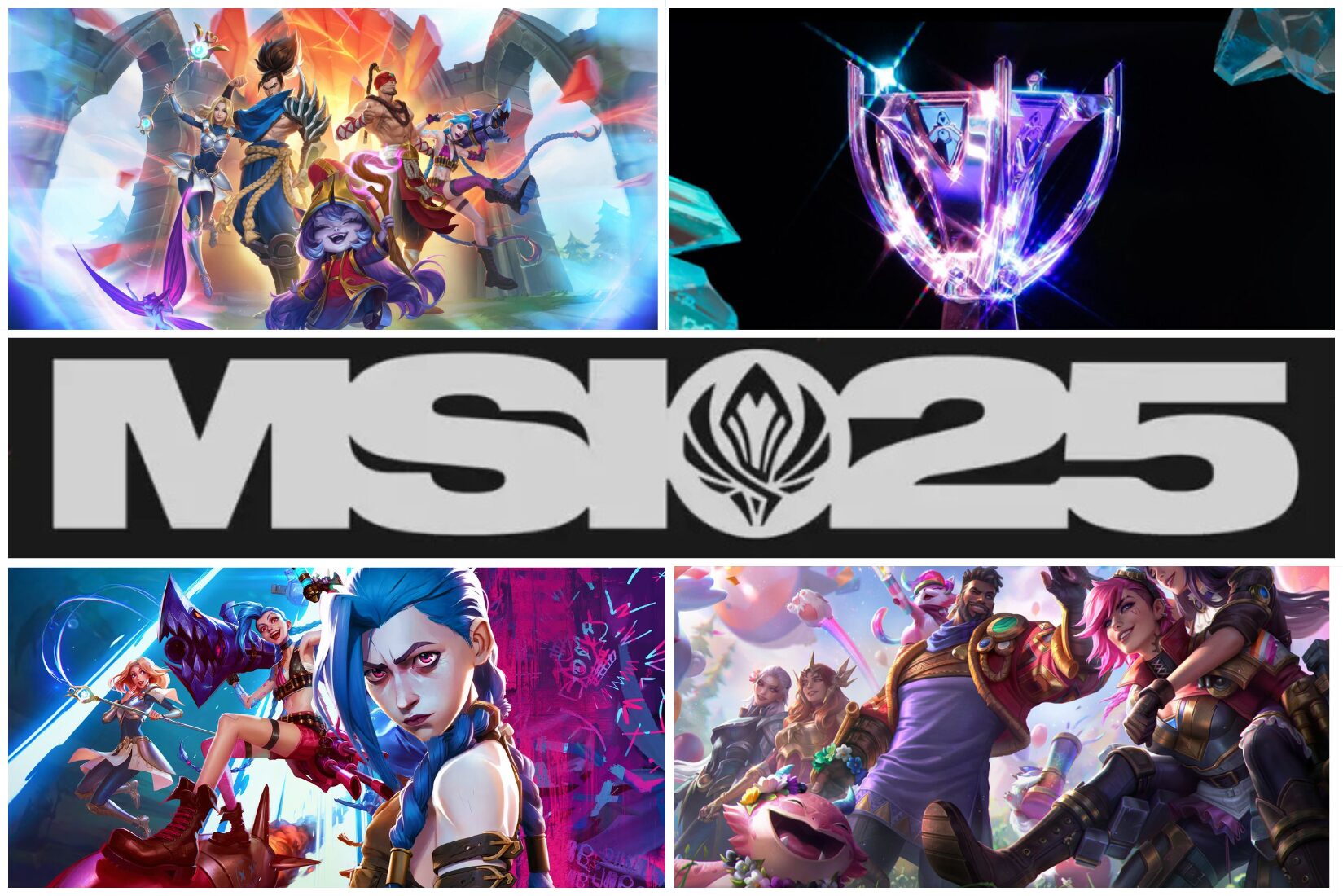
The LOL MSI 2025 Tournament stands as a pivotal global event on the esports calendar, presenting a rigorous testing ground for elite teams from each of the world’s major competitive regions. Beyond determining a mid-year champion, the results here have a direct and measurable impact on regional seeding, World Championship qualification, and sponsor opportunities. Key data and structure are as follows:
Summary
LOL MSI 2025 Tournament : Schedule and Structure
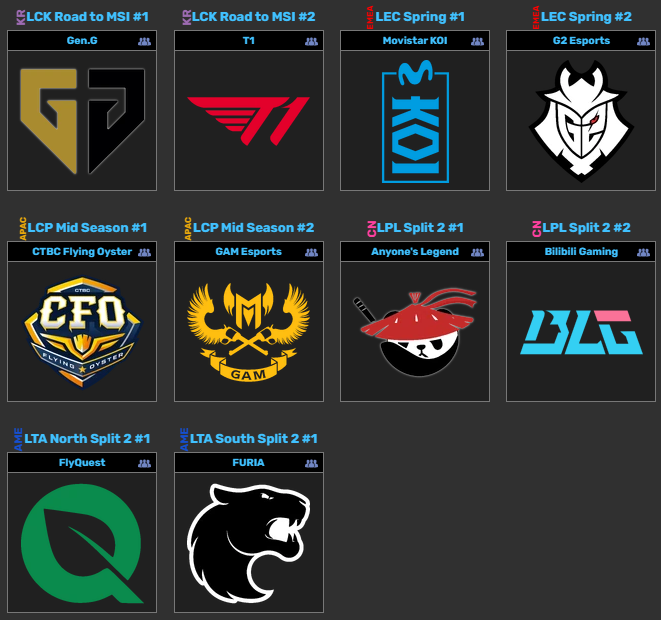
Play-In Stage: June 28–30
- Four teams: BLG (LPL #2), G2 (LEC #2), GAM (Vietnam), FURIA (Brazil)
- Double-elimination, Best-of-5 (BO5) matches
- Advancement: Two teams qualify for Knockout Stage
- Primary evaluation metrics: Consistency under pressure (BO5 series), coaching adaptability, real-time tactical execution.
Knockout Stage: July 2–13
- Eight-team bracket: Six direct qualifiers, plus two Play-In winners
- Double-elimination, BO5 throughout
- Feature: Pathways via both Winner’s and Loser’s brackets, designed to mitigate early variance and reward persistent high-level performance.
Grand Finals: July 13 at Pacific Coliseum, Vancouver
- Culminates in top-tier team versus team, projected peak mechanical output
- Key considerations: macro shotcalling, draft adaptivity, high-pressure teamfight coordination.
LOL MSI 2025 Tournament : Participating Teams and Seeding Details
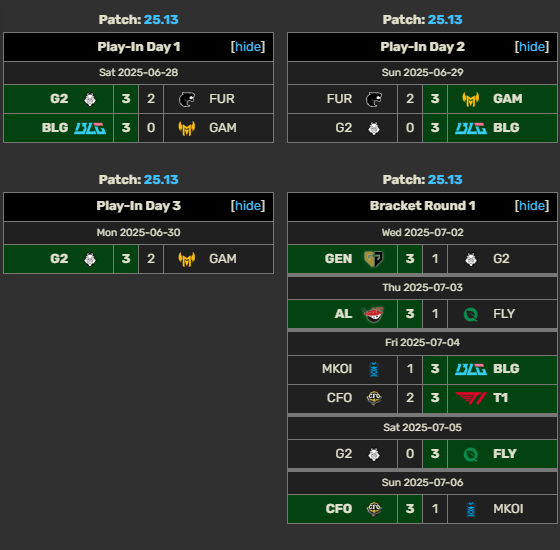
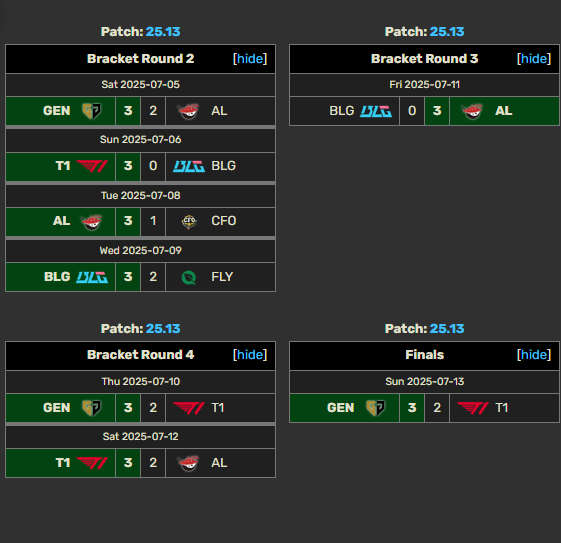
Direct Qualifiers:
• LCK/Korea: GEN (1), T1 (2)
• LPL/China: AL (1)
• LEC/Europe: KOI (1)
• LTA/Americas: FLY (1)
• LCP/Pacific: CFO (1)
Notable procedural note: T1 advanced directly due to HLE’s victory in the Global Pioneer Tournament, granting LCK region an additional high seed.
Play-In Representatives:
• LPL #2: BLG
• LEC #2: G2
• GAM (Vietnam), FURIA (Brazil)
Multiple regions deploy customized qualification formats (e.g., Swiss-system gauntlets in EU, double-elim brackets in Americas), contributing to diverse playstyles and metagame fluidity.
Innovations and Competitive Dynamics
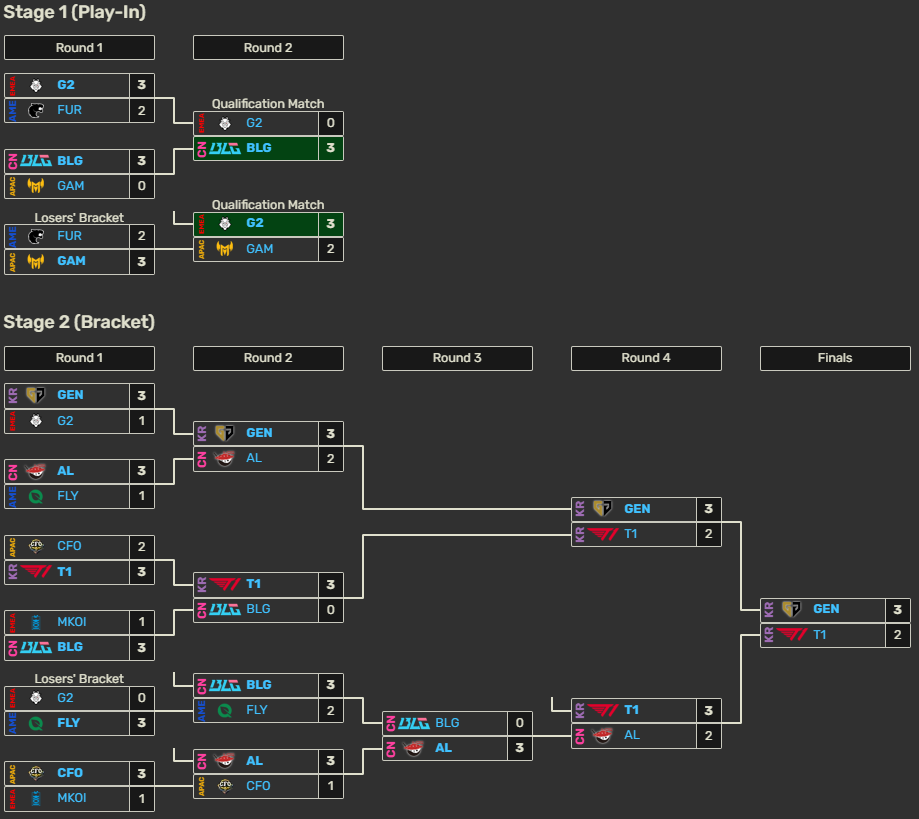
—Picture source from internet—
Double-Elimination BO5:
Designed to reinforce statistical fairness and decrease excessive volatility. The loser’s bracket provides a buffer against anomalous defeat, while maximizing the number of meaningful high-pressure series.
Regional Matchups:
Korean (LCK) strategic depth will contrast with Chinese (LPL) high-tempo aggression. These macro-micro dichotomies provide the most robust comparative datasets for evaluating regional meta-evolution.
Key Talent:
Players such as Faker, Chovy, Knight, and Tarzan represent outliers in mechanical execution and on-field decision making. Their individual metrics (KDA, CSD@15, DMG/M) will heavily influence series outcomes.
Broader Implications and Esports Significance
World Championship Qualification:
MSI outcomes dictate slot allocations: should the LPL achieve a 1st/2nd result, regional participants increase from three to four at Worlds—a significant mathematical shift for anticipated seed equity.
Macro Ecosystem Effects:
Performance at MSI serves as a KPI for fan engagement, future sponsorship, and region-wide developmental pipelines. Region with sustained top finishes reinforce internal infrastructure, talent retention, and brand value.
Conclusion
The 2025 League of Legends Mid-Season Invitational is set to be a compelling showcase of global esports talent. Its double-elimination, best-of-five structure ensures a rigorous test of each team’s adaptability and strategic depth, while the stacked rosters and enduring regional rivalries add historical and cultural context to the competition. In summary: MSI 2025 is a high-fidelity benchmark for both teams and regions, with every game contributing actionable insights toward future international standings and strategic priorities.
